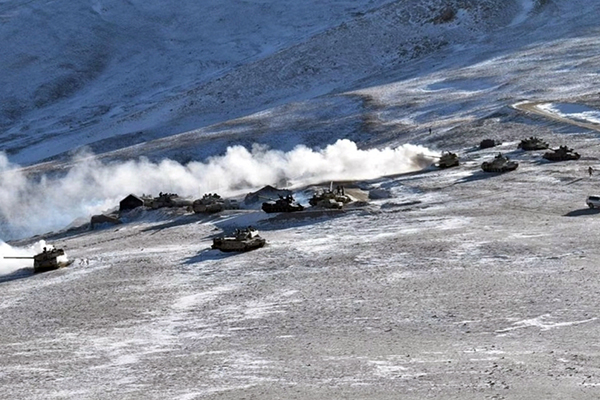India’s search for a light tank could end soon as L&T revealed that it is a partner in the ‘Zorawar Program’ aimed at building light tanks for the Indian Army, with the first prototype expected to be unveiled in late 2023.
Long on the lookout for a light tank, the Indian Army recently began Project Zorawar (roughly translated as “project powerful”), which calls for the introduction of homegrown light tanks to facilitate quicker deployment and movement in high-altitude battle zones.
L&T is now selected as a development partner for the homegrown light tanks, according to Jayant D Patil, senior executive vice-president for the defense at L&T, who made this statement to Janes on September 16.
While the company is involved in the platform’s development, he said that L&T is not assured a role in the tank’s production phase. Patil explained that under the Indian process, development and manufacturing contracts could not be combined.
“Developed equipment has to undergo field evaluation trials and emerge successful for the induction clearance, and then [the] production ordering process begins,” he added.
Patil did not go into detail about L&T’s involvement in the project. However, Janes was informed by a senior source at the Defence Research and Development Organisation (DRDO) that L&T is working with the state-owned organization on the development project.
“We [DRDO and L&T] are planning to disclose a prototype by the end of 2023,” the source added. The project is overseen by the Combat Vehicles Research and Development Establishment(CVRDE) of the DRDO.
India’s Quest to Acquire Light Tank
The development of light tanks for the Indian Army was announced by the Modi government on March 3, 2022. This move was made under the Make-I category of the 2020 Defence Procurement Procedure (DPP).
The Indian Army sensed a compelling need to put light tanks into service to counter China and establish operational superiority in high-altitude areas like Ladakh. After the border conflict with China in the summer of 2020, India initially considered purchasing the Russian light tank Sprut SDM1.
A Request for Information (RFI) for 350 light tanks in the 25-ton weight category was released by the Directorate General of Mechanized Forces in April 2021 on behalf of the Ministry of Defence (MoD). However, the country has now decided to develop its own light tank rather than import them.
The production and upkeep of India’s imported fleet of tanks had been impeded by the interruption in the world supply chain for defense-related components brought on by the ongoing Russia-Ukraine conflict. India must therefore create a light tank for the Indian Army domestically.
The China Factor
The Indian Army had to deploy bigger tanks like the T-72 and the T-90 after the deadly border clash with China.
The Russian-origin T-90 and T-72 tanks weigh about 46 tons. Arjun Mk 1A, India’s indigenous main battle tank, weighs around 68.5 tons. These tanks are not typically designed for use in high-altitude settings. Instead, they work well in the plains and deserts.
China, on the other hand, is thought to have many highly modern, cutting-edge tanks that are employed in combat as a blend of medium and light tanks with high power-to-weight ratios.
In the last two years, Beijing has positioned the most recent ZTL-11 wheeled armored personnel carriers, CSK series assault vehicles, and ZTQ 15 (Type 15) third-generation modern light tanks along the LAC in Eastern Ladakh.
India’s light tank development has advanced due to the operational difficulties of using large main battle tanks (MBTs) in mountain warfare. For instance, China’s ZTQ-15 light tanks can easily zoom through mountain passes while Indian armored battalions struggled to transport their heavy T-72s across terrain up to 17,500 feet.
The Indian Army is looking for a light tank with a 25-ton weight limit and the same firepower as its traditional tanks. In addition, the military wants them to be equipped with loitering weapons, artificial intelligence (AI), tactical drone integration for surveillance to offer situational awareness, and an active defense system.


















